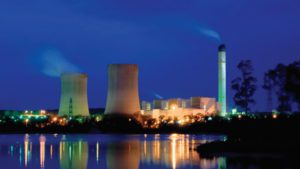
New data shows China’s electricity sector transformation accelerated in the first two months of 2016. While electricity consumption was up just 0.3% year on year (yoy) for the January-February period, coal imports fell 10.2% and coal production declined 6.4%.
Thermal power generation (coal and gas) was down 4.3% yoy to 679TWh for the first two months of 2016. By comparison, hydro electricity production was +22.6% yoy to 129TWh, a new record high.[i]
“Slowing economic growth, reduced energy intensity of economic activity and a rapid diversification in electricity towards renewables, nuclear and hydro electricity generation are combining to rapidly unwind China’s historic dependence on coal,” said Tim Buckley, IEEFA’s Director of Energy Finance Studies.
Two key trends are evident in China’s electricity sector transformation:
Firstly, electricity consumption has decoupled from economic activity as the Chinese economy continues to transition towards a greater reliance on less electricity intensive service sectors.
Secondly, a record 32 gigawatts (GW) of wind installations and 18GW of solar installations in 2015 alone show China’s efforts to diversify its electricity grid continues to gain momentum.

IEEFA estimates coal-fired power’s share of China’s total electricity generation peaked at 79% in 2011, and declined to 70% in 2015 (73% including gas). This new data puts China on track for coal fired power generation to lose another 2% share in 2016 and to exit this decade with a share below 60%. This is consistent with the Chinese government’s target of just 50-55% share for coal fired power generation by 2030.
IEEFA previously concluded that China’s absolute use of coal likely peaked in 2013. The subsequent data certainly supports this position. China’s coal consumption declined 2.9% year on year (yoy) in 2014, with a further decline of 3.7% yoy in 2015, and now in the first two months of 2016, the rate of decline has accelerated to 6.4% yoy.
In response to the unexpected decline in coal consumption, on 22 February 2016, China’s National Energy Board reported plans to eliminate 1bn tonnes per annum of coal mining capacity and redeploy over 1.2 million coal miners. The cuts could total as much as 17% of China’s total capacity. Additional new plans include a three-year moratorium of new coal mine developments and implementation of a coal-fired power plant capacity rationalisation.[ii]
The Chinese economy continues to slow, with the government targeting 6.5% real growth in gross domestic product in 2016, down from 6.9% in 2015. The first two months of 2016 saw momentum at the slowest rate since the start of 2015. While retail sales in China still grew 10.2% yoy,[iii] industrial output was reported to be up just 5.4%. In the first two months of 2016, China’s cement production was down 8.2% yoy and steel production down 5.7% yoy.
The economic transformation is clearly continuing.
Tim Buckley is the Director of Energy Finance Studies, Australasia for IEEFA. He has 25 years of financial markets experience, including 17 years with Citigroup culminating in his role as Managing Director, Head of Australasian Equity Research.








